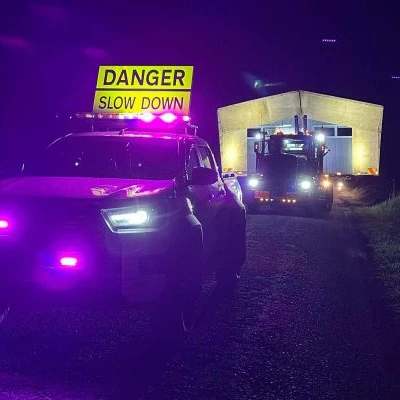
This advisory is for information purposes only.
The Federal Motor Carrier Safety Administration (FMSCA) recently issued a proposed rule amending federal safety regulations to specifically add rear impact guards as a required item on the list components assessed as part of annual inspections for motor carriers and at roadside inspections.
Under the present provisions, motor carriers are required to maintain and annually inspect the rear underrun bars fitted to vehicles. Despite the fact that underrun guards are intended to help reduce rear-end accident injuries, US inspectors seldom issue tickets when they observe a damaged or loose rear guard. However, if the new regulation becomes final, things will change. It will need to be pretty clearly defined as the current catchall provision that the underride guard not be damaged is so broad as to be ambiguous and unenforceable.
Since 1952, most trucks and trailers in the United States have been required by regulation to install rear underride guards designed to withstand the force of a crash and prevent a car sliding under a truck.
In a New Zealand context, there have been many discussions about the use of rear underrun guards, particularly on vehicles with long rear overhangs. Research undertaken some years ago suggested that rear underruns were not warranted in New Zealand because there are very few rear underrun accidents as a proportion of all truck accidents. Therefore, the costs of both the implementation and maintenance of these across the fleet couldn’t be justified. However, this hasn’t stopped the issue being raised here from time-to-time along with mandatory side underruns.
The data for a mandatory inspection regime in the US has been equally questionable and a longstanding federal requirement recommended that regulators take steps to collect better data on underride guard crashes and share information with police departments to help identify underride crashes and gather evidence to help justify the new policy.
The outcome from a Government Accountability Office (GAO) perspective made the point that, “Although reported underride crash fatalities represent a small percentage of total traffic fatalities, they present a greater risk of fatalities or serious injuries.
From 2008-17, there was an average of 219 fatalities in truck-involved underride crashes annually, about 5.4% of the total truck-involved crash fatalities each year, the GAO study said.
In USA the [federal regulations] have required rear impact guards for more than 65 years, they are not included on the list of components in Appendix G that must be inspected during the annual CMV inspection the proposal said. This meant that a vehicle can pass an annual inspection with a missing or damaged rear impact guard.”
Conversely a rear impact guard/rear underrun protection can be inspected roadside as part of the North American Standard Inspection Program. In 2017 inspectors documented more than 2,300 violations related to rear impact guards and rear end protection, more than half of which were for components that are missing, damaged or improperly constructed.
By including rear impact guards and rear end protection in the periodic annual inspection standards, US regulations will be harmonised with those in Canada and Mexico, which include rear impact guards and rear end protection as part of their annual inspection programs, a step forward for “continental” uniformity.
It’s worth noting the American Trucking Association still holds to its well documented opposition to side underrun protection for the same reasons RTF is opposed to side underruns. The opposition argument is settled on the lack of effectiveness of these devices.
RTF’s concern is what is successfully initiated overseas often has a way of tracking its way here, so while this may be an outlier topic, it will inevitably emerge here sometime in the future.
The information here is presented to inform and requires no action or response at this time.

